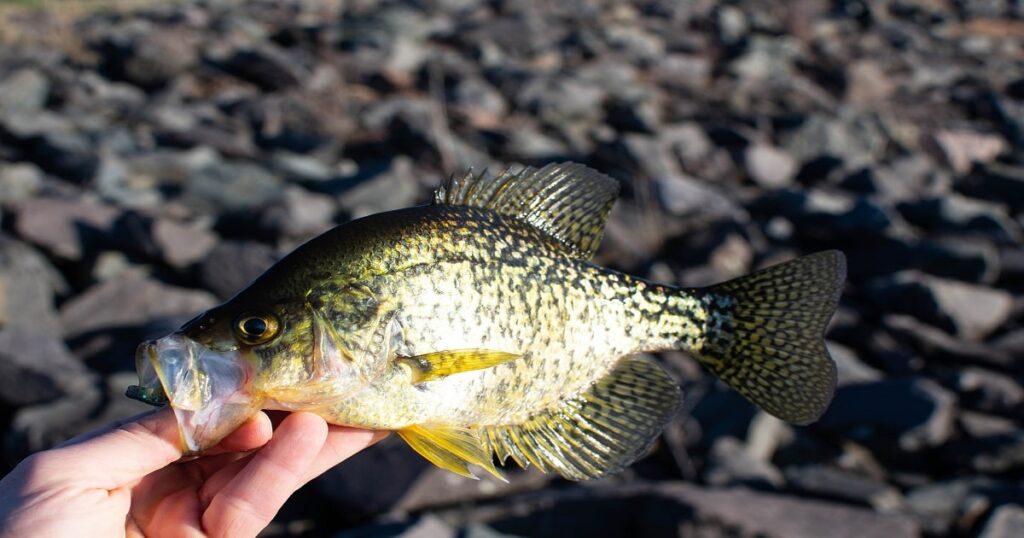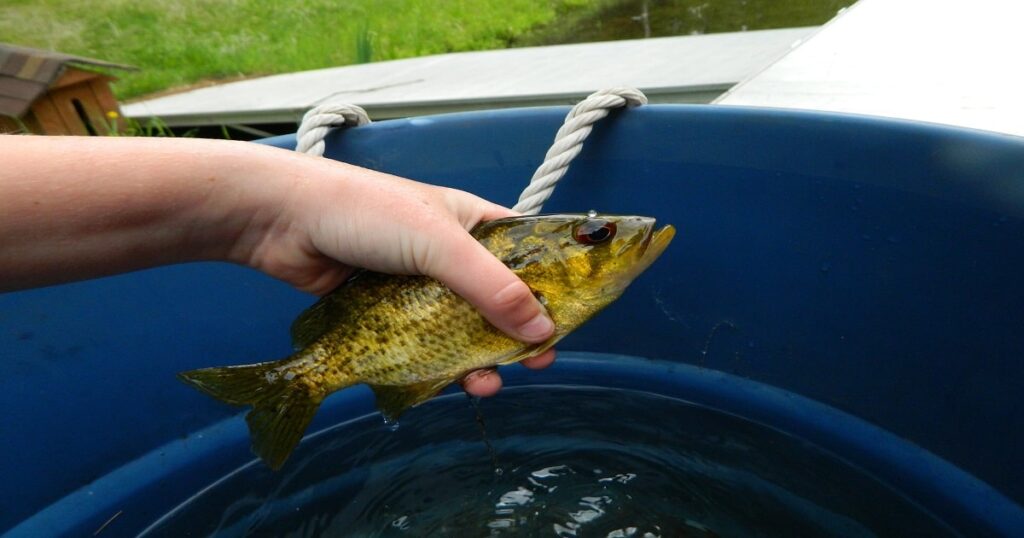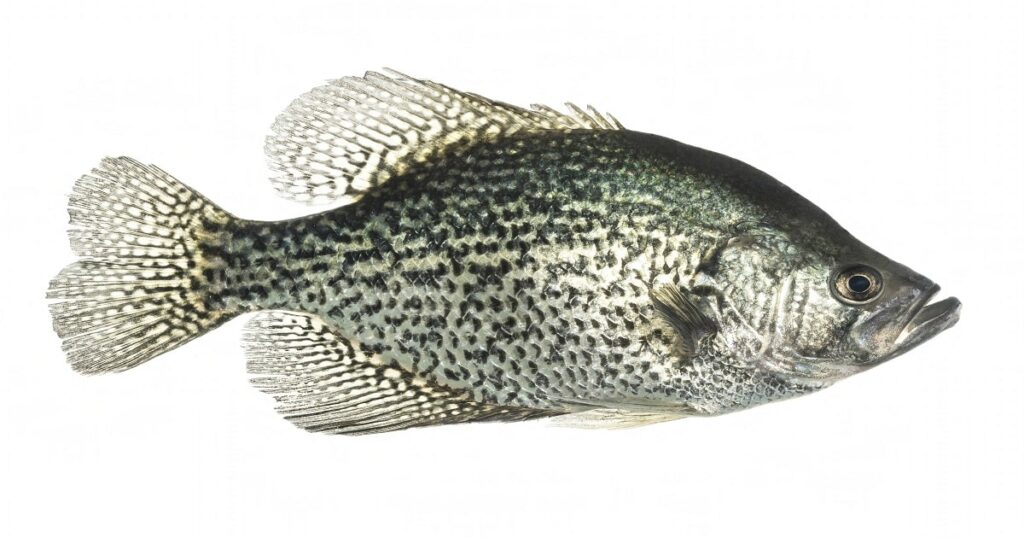Black Crappie (Pomoxis nigromaculatus) is a widely recognized freshwater fish species predominantly found in North America. Esteemed by anglers for the sport and excitement they offer, this article delves into their habitat, feeding habits, size and lifespan, record catches, identification, and effective techniques for their catch and release.
Black Crappie Habitat
Black Crappie prefers clear water and thrives in lakes, reservoirs, and slow-flowing rivers. During warmer months, they often frequent areas with submerged vegetation, where they find shelter and prey. In winter, Black Crappie tends to venture deeper into the water, seeking more stable temperatures.

Feeding Habits
Black Crappie primarily feeds on small fish, including young game fish, minnows, and even their own young. They also consume zooplankton, insects, and crustaceans. Their diet largely depends on their habitat and the available food sources.
Popular baits for Black Crappie include:
- Minnows: A top choice for many anglers, live minnows often produce good results.
- Jigs: Small and colorful, jigs can effectively attract crappie and are versatile enough for various fishing methods.
- Spinners: Ideal for covering a lot of water quickly.
- Worms: A classic bait that can work well, especially during certain times of the year.
- Insect Larvae: Like waxworms, which can be especially effective in colder months.
Local conditions and the season play a significant role in bait selection. Observing what seasoned anglers are using locally can provide helpful insights.
Size and Lifespan
Black Crappie typically weighs between 0.5 to 2 pounds, with a length of around 8 to 12 inches. Exceptional specimens might reach lengths of 16 inches or more and weigh over 3 pounds. Their average lifespan ranges between 7 to 10 years.

Black Crappie Record Catches
While Black Crappie might not reach the massive sizes of some other fish, record catches can still be impressive. At the time of this article two stand out records are:
- US Record: Lionel Ferguson caught a Black Crappie weighing 5lbs 7 oz (2.5 kg) in 2018 from Richeison Pond, Tennessee.
- Canadian Record: Charles Sherrill landed a Black Crappie from Lake Erie, Ontario, weighing in at 3 lbs 12 oz (1.7 kg).
It’s worth noting that while record catches provide bragging rights, many anglers appreciate the action from fishing for Black Crappie so all fish over a few lbs are considered special.
How to Identify Black Crappie
Black Crappie boasts a slightly compressed, roundish body. Their distinguishing feature is their color pattern: dark spots regularly scattered across a silvery-green to yellowish body. The dorsal fin typically starts further back on the body compared to other similar species.
These colour patterns and fin placement help differentiate the Black Crappie from other panfish species and its close relative, the White Crappie.

How to Catch Black Crappie
Catching Black Crappie doesn’t necessarily require specialized equipment. Light to medium-light spinning or spincast combos are often sufficient. Using a 4 to 8-pound test line with a light wire hook (sizes 2 to 8) can be effective.
If targeting larger specimens, it might be beneficial to use slightly sturdier gear, especially when fishing in dense vegetation where crappie might become entangled.
Fishing techniques vary with the season. During the spawn, casting or drifting over shallow flats can be productive. In contrast, trolling or vertical jigging in deeper waters can be effective during the summer and winter months.
Conclusion
Black Crappie holds a special place in the hearts of North American anglers. Their tasty meat and feisty nature, combined with their widespread distribution, make them a favourite target. With the right knowledge, equipment, and a touch of perseverance, any angler can enjoy the thrill of catching this delightful panfish.
Fancy learning about more fish? Check out the dedicated fish section of this website.